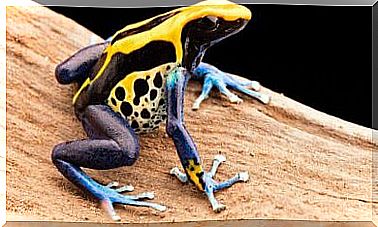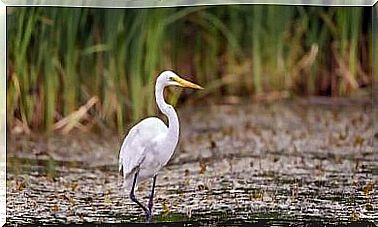The Asian Hornet: Characteristics, Habitat And Curiosities
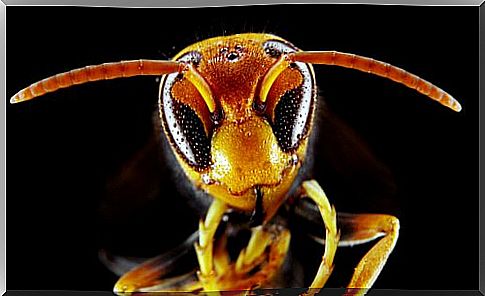
The Asian hornet is, as its name suggests, a species of wasp found in Southeast Asia. Equipped with an elongated and sturdy body, it has a respectable sting and a sting can also create problems for humans.
In addition to being a fascinating and beautiful hymenopteran insect to look at, unfortunately the Asian hornet has become very famous for being one of the most dangerous invasive alien species.
In this article we will help you to get to know it more closely.
Asian hornet: everything you need to know
Like other hymenoptera, the Vespa velutina (also known as the “yellow-legged hornet”) feeds mainly on insects. In particular, one of its favorite prey are bees, so it poses a serious threat to the ecosystem .
Asian hornets are three times larger than normal wasps. Like other similar insects, their social structure includes a queen (which can measure 50 mm) and thousands of workers.
The hive of the Asian hornet is built on trees, but also under the roof of buildings and can therefore represent a problem even for those who live there.
These nests are spherical in shape and usually have a side exit. Inside, up to 2000 hornets can live.
As already mentioned, the larvae are fed thanks to the hunt for the prey favored by the Asian hornet: bees. They represent 84% of the diet of these fearsome hymenoptera.
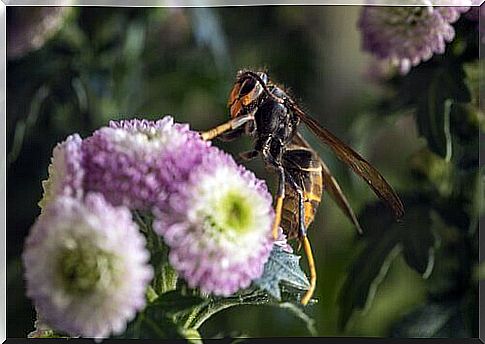
How do bees defend themselves from the Asian hornet?
Although European bees have never lived with these animals, the truth is that Asian bees have had to evolve and find strategies to defend themselves against these animals.
Their “coexistence” with the Asian hornet has lasted for thousands of years.
As a defense tactic, bees surround Asian hornets in large numbers, like a swarm. This causes a rise in temperature and a reduction in oxygen around the wasps, which eventually die.
The fact is that bees are able to withstand higher temperatures.
The problem is that the Asian hornet has arrived in Europe and our bees are also starting to behave similarly .
This is a real emergency, as bees play a vital role in nature. Their disappearance would be catastrophic for the human being.
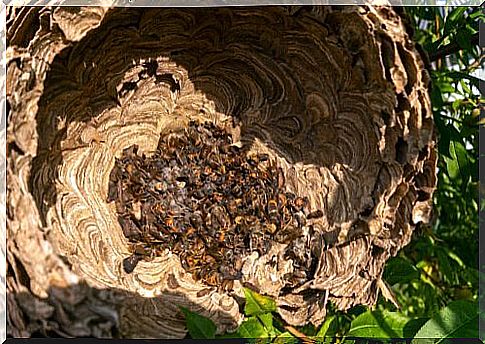
Is the Asian hornet dangerous to humans?
Without creating easy alarms, the Asian hornet actually poses some dangers to humans, although not many more than the European hornet, as both prefer to flee by flying rather than attack.
Generally, these animals use the stinger to defend the nest, so take risks only when you are outdoors, in contact with these hives.
The injected venom is of the same nature as that of the European wasp, although more is inoculated.
The greatest danger is for those who are allergic to these animals’ venom or multiple stings, which can lead to death from anaphylactic shock .
Unfortunately, several people have died as a result of the attacks of this insect.
Why did the Asian hornet come to Europe?
The arrival in Europe of the Asian hornet occurred in 2004 and is due to a merchant ship landed in France. It is currently present in Belgium, Portugal, Spain and, of course, also in Italy.
This species has been classified as an invasive species in our country and local administrations are trying to take the necessary measures to counter its spread.
In addition to being dangerous for humans, its excessive presence could significantly damage the environment and the economy of entire areas.





